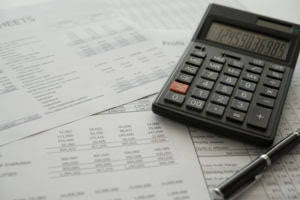How to Void a Check: A Step-By-Step Guide
This influences which products we write about and where and how the product appears on a page. Here is a list of our partners and here’s how we make money. I graduated in 2003 from Carnegie Mellon University with a Masters in Software Engineering and I use my analytical skills to navigate the financial world. It’s through this education that I try to distill complex financial ideas into simple steps regular folks can use to take control of their money and build wealth.
How to dispose of a voided check
Employers may not be the only entities you’ll have a direct deposit arrangement with. Direct deposit will be the preferred way for those institutions to make payments and https://www.online-accounting.net/the-vertical-balance-sheet/ for you to receive them quickly. You can ask your financial institution to send a letter providing all the same information to the party requesting your voided check.
Reasons for Using a Voided Check
One of the advantages is your bank or credit union may send the letter directly to the party requesting the voided check, avoiding the need to send it by email. Banks and credit unions are well instructed in methods of protecting personally identifying information and they will know the best way to send the letter safely to the https://www.online-accounting.net/ intended party. This is a fancy name for checks printed on demand for specific purposes at your bank or credit union. Banks typically charge a fee for these checks, which can be anywhere from a few dollars to as much as $25. But, if you normally have no need for paper personal checks, this can be a way to provide a voided one.
What Is A Voided Check?
There are several common situations when someone will ask for a voided check, which the next section discusses. Make a note of the check-in your check register so that you know where that particular check went. If you don’t, you’ll have a gap in check numbers, leading you to wonder what happened.
Can I Deposit a Voided Check?
- By asking you for a check, your employer reduces the potential for errors.
- [+] She is smiling at the ease of use as she works on her smart phone banking app to do monthly finances, pay taxes and save money for the future.
- If any person or organization requests a voided check, be prepared to question them about the exact purpose.
- For that reason, voided checks should never be provided lightly.
- After all, an email can be forwarded, exposing your check information to unintended parties.
A voided check is a paper check with the word “void” written in large, bold letters across its face. Should someone get the voided check, the person wouldn’t be able to cash or deposit it. You may need to void a check when you make an electronic financial transaction. A voided check includes banking information required to ensure correct electronic banking transactions for people who pay bills online and or are paid via direct deposit. Voiding a check is a common practice used to nullify incorrect checks and set up direct deposits or bill payments.
It typically serves to share bank account details for electronic transactions and should not be used for deposits, withdrawals, or payments. Voiding a check can be a key step in setting up financial transitions like regular payroll direct deposits. Voiding a check properly by writing “VOID” in large letters on the documents will help reduce the risk that the check will be cashed. In lieu of a voided check, you may also be able to provide documents such as a direct deposit slip that can provide the key financial information for the transition. Many small or less formal organizations may allow you to provide the information from your checking account directly to them in lieu of sending documentation.
You can easily void a paycheck or other payment through QuickBooks or other accounting software. A voided check is a check written or partially written but then canceled or deleted by the maker of the check. If you already sent a check that needs to be canceled, it’s obviously a little too late to write VOID across it.
Employers often use voided checks to set up direct deposits for their payroll, and service providers may need them to set up direct debits. This is because a blank check has all the information they need, such as routing or account numbers. Using a voided check reduces the likelihood of a transcription or other type of error. A voided check is deliberately canceled, marked “VOID” to prevent any financial transactions.
After all, an email can be forwarded, exposing your check information to unintended parties. The word “Void” should stand out from the pre-printed information on the check, so it’s clear to anyone that the check’s invalid. If you make the lettering too fine, or you use a highlighter, a potential thief may be able to either erase or cover your writing, simply copy the check and make the highlighting disappear. Voided checks are also frequently requested when setting up recurring financial transactions because they contain all of your banking information.
Another solution is to visit a branch and ask for a “counter check.” The teller might be able to print a check with your account information on it. If so, try voiding that check as if it came out of your checkbook. If a thief gets their hands on the check, they won’t have a blank check, which they could use to spend your money—effectively stealing from your account. Writing “VOID” across the front of the check prevents anybody from using the check to make a standard check payment (by filling in a payee and an amount). You may need to void a check if you wrote a check and made a mistake. If you write the wrong dollar amount, then you’d have to void the check to keep anyone from cashing it or depositing it.
There is only one hitch, you need to know how to void a check, and you may not have done that before. As paper checks become less common in banking, organizations that normally depreciation depletion amortization require a voided check may be more receptive to another method. Try those first and you avoid the risk of your sensitive financial information falling into the wrong hands.
See if you can set up your bank account link entirely online. Instead of using forms, which require you to void a traditional check, try logging into your account (or ask if there’s an online system). In most cases, you need to provide your bank account information in an online form. The only way to stop the check from being cashed or deposited is to request a stop payment from your bank, which may involve a fee.
The process is fairly straightforward, but it’s important that you do it carefully to avoid someone using your check fraudulently. Once you have the voided check you need, consider scanning or photocopying it. You may need to provide voided checks numerous times in the coming years. When an original check is not required (for example, if you’re going to fax in the instructions or submit an electronic image of your check), you can use the same copy repeatedly.







